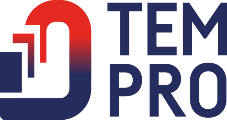Critical Materials
The development of the periodic table of element was possible through the funding of the Cascade Use Research Group at Oldenburg University. Most data was generated by publications of the European Commission and the German DERA and Federal Institute for Geosciences and Natural Resources. All references are cited in the table and further information is given on the bottom of this page. If you would like to add data to this table please contact us.
The research of the CCU group focuses on critical materials and their fate. We provide an overview on selected publications and information on critical materials in the EU. Main focus lies on resources in automobiles and WEEE.
Note, that we do not guarantee the completeness of the information given and further studies are necessary.
Technologies
| 1 H |
2 He |
|||||||||||||||||
| 3 Li |
4 Be |
5 B |
6 C |
7 N |
8 O |
9 F |
10 Ne |
|||||||||||
| 11 Na |
12 Mg |
13 Al |
14 Si |
15 P |
16 S |
17 Cl |
18 Ar |
|||||||||||
| 19 K |
20 Ca |
21 Sc |
22 Ti |
23 V |
24 Cr |
25 Mn |
26 Fe |
27 Co |
28 Ni |
29 Cu |
30 Zn |
31 Ga |
32 Ge |
33 As |
34 Se |
35 Br |
36 Kr |
|
| 37 Rb |
38 Sr |
39 Y |
40 Zr |
41 Nb |
42 Mo |
43 Tc |
44 Ru |
45 Rh |
46 Pd |
47 Ag |
48 Cd |
49 In |
50 Sn |
51 Sb |
52 Te |
53 I |
54 Xe |
|
| 55 Cs |
56 Ba |
57 La |
* | 72 Hf |
73 Ta |
74 W |
75 Re |
76 Os |
77 Ir |
78 Pt |
79 Au |
80 Hg |
81 Tl |
82 Pb |
83 Bi |
84 Po |
85 At |
86 Rn |
| 87 Fr |
88 Ra |
89 Ac |
* * |
104 Rf |
105 Db |
106 Sg |
107 Bh |
108 Hs |
109 Mt |
110 Ds |
111 Rg |
112 Cn |
113 Nh |
114 Fl |
115 Mc |
116 Lv |
117 Ts |
118 Og |
| * | 58 Ce |
59 Pr |
60 Nd |
61 Pm |
62 Sm |
63 Eu |
64 Gd |
65 Tb |
66 Dy |
67 Ho |
68 Er |
69 Tm |
70 Yb |
71 Lu |
||||
| * * |
90 Th |
91 Pa |
92 U |
93 Np |
94 Pu |
95 Am |
96 Cm |
97 Bk |
98 Cf |
99 Es |
100 Fm |
101 Md |
102 No |
103 Lr |
Legend
Critical Candidate
Lanthanide Actinide Noble gas Unknown
gas liquid solid unknown
Explanations to the periodic table
HHI Index
The Herfindahl index (also known as Herfindahl–Hirschman Index, HHI, or sometimes HHI-score) is a measure of the size of firms in relation to the industry and an indicator of the amount of competition among them. Named after economists Orris C. Herfindahl and Albert O. Hirschman, it is an economic concept widely applied in competition law, antitrust[1] and also technology management.[2] It is defined as the sum of the squares of the market shares of the firms within the industry (sometimes limited to the 50 largest firms),[3] where the market shares are expressed as fractions. The result is proportional to the average market share, weighted by market share. As such, it can range from 0 to 1.0, moving from a huge number of very small firms to a single monopolistic producer. Increases in the Herfindahl index generally indicate a decrease in competition and an increase of market power, whereas decreases indicate the opposite. Alternatively, if whole percentages are used, the index ranges from 0 to 10,000 "points". For example, an index of .25 is the same as 2,500 points.
(Source: https://en.wikipedia.org/wiki/Herfindahl_index)
GLR (means "gewichtetes Länderrisiko")
This is a German Unit made by DERA (Deutsche Rohstoffagentur).
The weighted Country risk (GLR) is based on data from Mining, Mineral Processing and net Imports correlated with country indices or country rankings in relation to the World-wide Governance Indicators of the world bank (Worldbank 2014). The country indicators are based on :
- Voice and Accountability
- Political Stability and Absence of Violence
- Government Effectiveness
- Regulatory Quality
- Rule of Law
- Control of Corruption
Details are available in German in the DERA report „DERA Rohstoffinformationen 2014“ on page 13:
https://www.bgr.bund.de/DE/Gemeinsames/Produkte/Downloads/DERA_Rohstoffinformationen/rohstoffinformationen-24.pdf?__blob=publicationFile&v=4
The DERA has also the newest publication for the raw materials:
https://www.deutsche-rohstoffagentur.de/DERA/DE/Downloads/rohstoffliste-2016.pdf?__blob=publicationFile
In addition, you find some further facts on the website of the Federal Institute for Geosciences and Natural Resources:
https://www.bgr.bund.de/EN/Themen/Min_rohstoffe/Produkte/produkte_node_en.html?tab=Mineral+Commodity+Facts+and+Figures
For selected technologies we included the references from the German report DERA "Rohstoffe fürZukunftstechnologien 2016" available only in German:
https://www.deutsche-rohstoffagentur.de/DERA/DE/Downloads/Studie_Zukunftstechnologien-2016.pdf?__blob=publicationFile&v=5
This research is according to the discussion on securing raw materials in the EU and the raw materials criticality are further discussed in detail on the EC website:
https://ec.europa.eu/growth/sectors/raw-materials/specific-interest/critical_de
Excerpt:
„Raw materials are crucial to Europe’s economy. They form a strong industrial base, producing a broad range of goods and applications used in everyday life and modern technologies. Reliable and unhindered access to certain raw materials is a growing concern within the EU and across the globe. To address this challenge, the European Commission has created a list of critical raw materials (CRMs) for the EU, which is subject to a regular review and update. CRMs combine raw materials of high importance to the EU economy and of high risk associated with their supply.“

